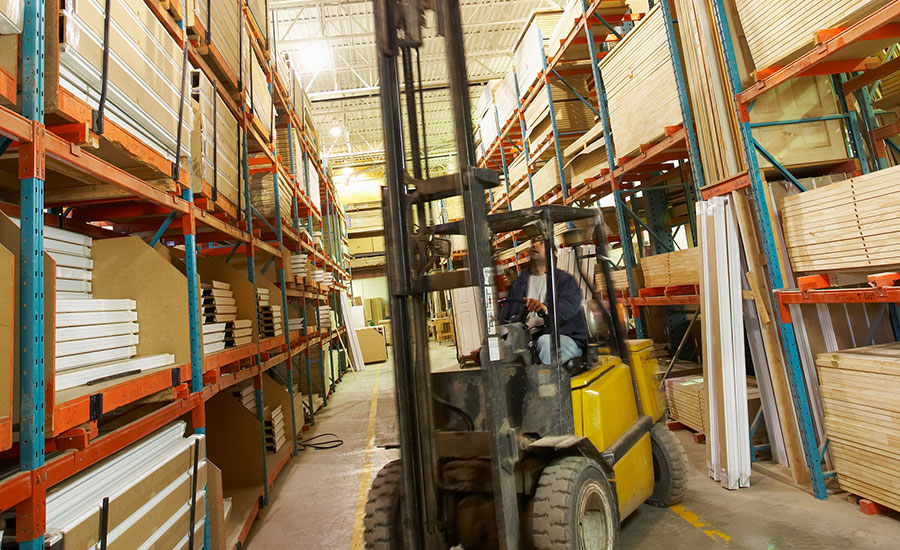Worker safety is a paramount concern in warehousing and distribution center operations. However, facility managers and manufacturers can expect even more scrutiny following the recent National Emphasis Program on warehouse safety announced by the Occupational Safety and Health Administration (OSHA). Learn what this development means for your establishment and what you can do to meet compliance requirements.
What the National Emphasis Program entails
In July 2023, OSHA issued a directive on increased safety inspections at warehouses, fulfillment centers and related facilities. The program describes policies and procedures for OSHA officers to follow when inspecting certain high-injury-rate retail establishments, including warehousing and distribution center operations, mail processing, and parcel delivery services.
It also aims to reduce workplace hazards in these industries over the next three years and ultimately “lead to permanent change in workplace safety.” To that end, all states should adopt this program as part of their warehouse safety policies or establish a different program with similar parameters to the federal model.
Why is it important?
The warehousing and storage industry has grown considerably over the last decade. From January 2013 to October 2023, the number of employees rose from 707,000 to 1.8 million, according to the U.S. Bureau of Labor Statistics (BLS).
However, in the same period, there has also been a significant increase in occupational injuries and illness rates. OSHA states that from 2017 to 2021, the Days Away Restricted or Transferred (DART) rate has been higher in warehousing and distribution center operations compared to other industries. The DART rate describes the number of recorded injuries per 100 full-time employees that resulted in days away from work.
BLS data also shows the transportation and warehousing sector recorded the highest DART rate in 2022 at nearly five percent. These worrying statistics underscore the need for the comprehensive safety inspections and procedures outlined in the OSHA emphasis program.
Key compliance areas
The inspections under this program will focus on safety hazards related to:
- Powered industrial vehicle operations.
- Material handling procedures.
- Storage facilities.
- Walking and working surfaces.
- Egress and fire safety measures.
Where heat or ergonomic hazards are present, OSHA will conduct comprehensive health inspections. The program scope may also expand to other areas of the establishment where industry-standard safety measures still need improvement. The program will be evaluated after 12 months to assess its effectiveness and whether it should continue.
What does this mean for warehouse managers and employers?
It means you should expect a higher rate of inspections conducted at your facility. While this isn't exactly welcome news, it’s important to look at the big picture.
Workplace injuries and illnesses are expensive. Businesses spend up to $1 billion weekly on direct costs alone — medical expenses, compensation payments, legal fees and more. There are also indirect costs like lost productivity, equipment repairs and worker replacements to consider. All in all, it’s infinitely better to have a safe facility from the get-go and OSHA’s national emphasis programs are a great way to achieve that.
That said, these programs do not create new regulatory obligations. OSHA categorically states that the instructions provided in its directives “are not standards, regulations or any other type of substantive rule.” Nevertheless, understanding these policies gives you valuable insights into what the agency prioritizes when assessing and enforcing worker safety regulations.
How to prepare for OSHA warehouse inspections
Knowing what to expect can help you handle an OSHA inspection the right way. One of the first things to note is the organization rarely gives advance notice of facility inspection. You should always be prepared, especially now that such assessments will be more frequent.
The inspection process itself is usually straightforward. It begins with an opening conference in which the OSHA inspector will meet with management representatives and employees to explain the purpose of the inspection. Next is the walk around the facility to check for safety and health hazards. Then, there’s the closing conference, where the inspector discusses their findings and provides recommendations for addressing documented violations.
In terms of preparing for inspections under this new emphasis program, the following are the main focus areas to keep in mind.
Forklift operation safety
Ensure forklifts, guided vehicles and other industrial vehicles used in warehousing operations meet the required safety standards. Forklift accidents alone resulted in over 7,200 nonfatal injuries in 2020 and 70 work-related fatalities the following year. Establishing clear travel paths and providing proper employee training are fundamental to preventing forklift injuries.
If your facility uses electric forklifts, you’ll also want to pay close attention to the battery room. Make sure it has adequate ventilation and that there are emergency stations nearby.
Workplace ergonomics
This particularly relates to your warehouse’s material handling procedures and storage facilities. Because of the heavy lifting and repetitive movements involved in warehouse operations, it’s important to optimize your warehouse layout for efficient traffic flow patterns.
An ergonomic warehouse encourages safe navigation and reduces the risk of safety hazards. Plus, it’s a great way to maximize the available physical space for optimal throughput.
Fall protection systems
Slips, trips and falls are among the leading causes of injury in the workplace. In 2020, they accounted for 18% of all nonfatal work injuries, resulting in increased DART rates.
Fall protection systems must receive high priority when preparing for an OSHA inspection. In particular, make sure continuous railing systems are installed across all walking and working surfaces. Ladders and stairways should also be equipped with railings and gates.
Clear signage
Providing clear visual communication helps increase awareness of potential hazards in and around your facility. Safety signs should be posted prominently in areas with potential risks so workers have the information they need to act safely.
In addition to signage, you should conduct robust safety training and retraining with staff at all levels. Remember to listen to any feedback they may have. For instance, they may identify a new potential hazard or a promising solution to help ensure your facility is ready for an OSHA inspection.
The time is now to prioritize warehouse safety
Warehouses and distribution centers see lots of activity daily, making them susceptible to safety hazards. With OSHA’s increased focus on warehouse safety, now's the time to ensure you’re doing everything possible to implement the necessary measures, protect workers from potential hazards and maintain good practices.






